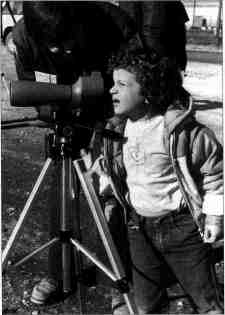
Bald Eagle Days at Lock and Dam in the Quad Cities attract thousands of visitors each year to view the magnificent bird.
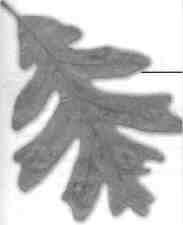
Are you interested in preserving our wildlife heritage? Here's how you
It's pretty natural to take things for granted— nature included. I do it, and you probably do too. But we shouldn't, because here in Illinois the shocking news is that we have already lost 95 percent of our wetlands, 70 percent of our forests and 99 percent of our original prairies. Without needed habitat, 510 species of our plants and animals have become either endangered or threatened—a level of decline that is pretty difficult, but not impossible, to over- come.
To help combat this problem, the Wildlife Preservation Fund was established 15 years ago and is making a tremendous difference. Funded by contributions, its proceeds are used to finance projects that have a positive impact on the preservation of non-game wildlife, especially those species whose existence may be threatened or endangered. The term non-game wildlife encompasses those animal species which cannot be legally hunted in Illinois. But the fact is, when you help a non-game animal, you likely are helping all animals—game and non-game species alike.
The Public's Role
Not only is the Wildlife Preservation Fund
financed by private citizens, its advisory board
is comprised of 11 lay people who review grant
applications and make recommendations for
approval to the director of the Department of
Natural Resources. Also impressive is the fact
that each year approximately 40 small projects
(involving $ 1, 000 or less) receive financial
support. These small projects frequently involve
local non-profit clubs and organizations and
students interested in conservation. WPF support oftentimes brings projects to fruition that
might otherwise fall prey to a limited cash flow.
Additionally, the tax check-off program— as the WPF is more commonly known— funds large projects proposed by DNR staff members. For example, this year, $20, 000 will be used to purchase prairie grass and forb seed for use by regional ecoteams in the establishment of habitat for grassland wildlife. The seed will be utilized only on private lands where there is landowner commitment along with a DNR management plan or federal agreement to restore the area to grassland habitat.
A second large project with an estimated cost of $ 10, 000 will provide for a biological inventory of the Kaskaskia River bottomlands; a third will earmark $3, 000 for a site inventory of the Momence Welands in Kankakee County; and a fourth will utilize $14, 500 for a two-year study of the impacts of white-tailed deer on perennial spring wildflowers.
According to Carl Becker, chief of DNR's Division of Natural Heritage, the idea for the check-off program originated in Colorado in 1979. Illinois was the third state to follow suit in 1983, with the WPF being one of the original choices available to Illinois taxpayers. Only two of the original options remain today as contributions must exceed $ 100, 000 annually in order for a fund to remain as a viable check-off option. Becker said in past years, as many as 10 choices were available to taxpayers. This year, there are eight, and WPF can be specified on line 26a of the IL1040 or line 10 of Telefile.
March/April 1999 47
"Something as simple as watching a robin feed its young, a hawk soaring effortlessly in the afternoon sky or a painted turtle sunning itself on a log makes us appreciate the quiet beauty and importance of nature."

Bald Eagle Days at Lock
and Dam in the Quad
Cities attract thousands of
visitors each year to view
the magnificent bird.
The Power of Partnerships
Debra Carey, a member of the Lee County
Natural Area Guardians, knows first hand how
the WPF can make a difference. Carey's volunteer group is a six-time recipient of the Wildlife
Preservation Fund's small projects awards. The
group has received money to study the endangered Illinois mud turtle, build nest boxes for
barn owls, prepare an endangered species slide
show, survey the Blanding's turtle population,
survey for purple loosestrife and conduct a wetland inventory. The guardians group, which
was established in 1979, consists of 60 members who range in age from 10 to 90. A partner
with the local Soil and Water Conservation District, the group is entirely self-sufficient, raising
funds through grants, fundraisers and yearly
dues.
"Probably the single most important thing about the small projects is the fact that individuals and groups such as ours can become partners with the DNR," Carey said. "People feel that they are really part of the big picture and even though they are not scientists or biologists, they actually can help the natural resources of the State of Illinois. A couple of projects that started with our group actually got our entire county involved."
Carey tells of issuing press releases in 1986 to inform county residents that live turtles would be trapped in conjunction with a search for the endangered mud turtle. "We planned to age the turtles, weigh them, sex them and permanently mark them so we could come back years later and get some more information," she said. "People were just fascinated with the project. The
WPF grant put the words mud turtle in everyone's mouth in Lee County." Only one mud turtle was discovered during the search.
Carey said the main point was to educate people that habitat is disappearing at a terribly fast rate and if we expect to maintain viable populations of certain species, we have to maintain habitat. "Once plants and herbs get to the point where they are endangered, most of them have very little chance of getting off the list without becoming extinct.
"As a result of the Wildlife Preservation Fund, there has been a tremendous amount of public education in Lee County," she said. "People now realize our group is out there, educating them on things they never even thought of like turtles, barn owls and purple loosestrife. What they previously might thought of as a pretty plant now has them wondering: 'oh, oh, is this a plant we need to watch out for?'"
Advice for Small Grant
Applicants
Carey's advice to other groups and individuals considering an application for WPF funds is
brief and to the point.
"First of all, take a look at what is in your area. Identify the critical needs and work at addressing them. There is no sense in doing a bobcat survey if you are in the middle of Chicago. Do something that is going to have some lasting significance for both your community and the entire state. Your district biologist is the best source for information as to what is going on in your county.
"I sometimes think people apply for grants that are extremely local and without any state- wide significance," she said. "So, when we apply for grants, we look at educating people to help with natural resources or at generating hard scientific evidence. And remember, you'll need volunteers—the kind of people who are enthusiastic and willing to work."
Large Projects,
Big Rewards
As the Wildlife Preservation Fund marks its
15th year, it is appropriate to highlight a few
successful projects that have benefited from
its contributions.
• Nesting bald eagles - In 1952, a solo bald
48 Illinois Parks and Recreation
eagle was sighted nesting in Illinois. It was more than 20 years before another appeared, and for many years thereafter, only a couple of nests were documented each year. As the result of a WPF campaign to educate people about the conservation of eagle habitat and the need to protect these birds, Illinois today is a premier site for eagle watching. Eagle watching events such as Bald Eagle Appreciation Days attract thousands of visitors each year to the Quad Cities and to Lock and Dam 19 at Hamilton. Both events were initiated as WPF projects. Last year's eagle nesting survey, which is supported by the WPF, documented 30 nesting pairs in Illinois.
• Reintroduction of the River Otters - One of the highly visible WPF efforts has been the restoration of the river otter, a state endangered species. Since 1994, WPF money has been used to purchase river otters and release them at locations around the state. To date, 346 otters have been released into Illinois waterways. Schoolchildren and adults alike rallied to the cause and became involved with the restoration effort. The media did its part to promote the program by focusing on public releases. As a result, many individuals have a new awareness of our natural heritage and an appreciation for the importance of safeguarding habitat.
• Mapping of the Savanna Army Depot -
WPF funds have enabled the mapping of this
13, 000-acre site which includes 6, 500 acres of
Mississippi River backwater lakes, islands and
bottom land forest and 6, 600 acres of sand
prairie and sand savanna/forest. More than 30
federal and state endangered species populate
the area. A detailed natural community map
was produced from aerial photos and extensive
ground surveys and an invertebrate inventory
were conducted.
• Programs Aimed at Protecting Illinois Streams
- Projects aimed at developing and
implementing strategies for reducing or eliminating the impact of stresses on rivers and
improving me overall health of the stream system
have been boosted by the WPF. One such effort was the Mackinaw River Project, a
high-quality stream containing at least 80 species of
fish and 28 species of mussels.
• Peregrine Falcon Restoration — In 1997, there were eight nesting pairs of peregrine falcons in the state. Quite a comeback considering that until the restoration program began the peregrine last nested in Illinois in 1951. Currently the federal government is considering the removal of the species from the endangered list. The WPF has played a major role in the restoration effort in Illinois. In fact, Chicago is home to Harriet, the oldest Midwest peregrine, who at 12 years of age has only seven more years to go to set a world record. She and Jingles, her 11-year-old mate, produced four eggs last year in their new nest box on Wacker Drive. The peregrine restoration in Illinois was funded by the WPF.
Although the projects financed by the fund focus on plants or animals, it is fair to say we are the ultimate beneficiaries. Many of us have come to realize the quiet beauty and importance of nature and recognize the fact that we would not want to relinquish this segment of our lives. The WPF is just one way for us to help preserve what nature has to offer.
The peregrine falcon release program has been another successful program funded by the Wildlife Preservation Fund. This 1987 photo provides a close-up look at the bird prior to its release in Chicago.
LIZ PENSONEAU
is a staff writer for OutdoorIllinois, a publication of the Illinois
Department of Natural Resources. This article is reprinted with
permission from the January 1999 issue of OutdoorIllinois
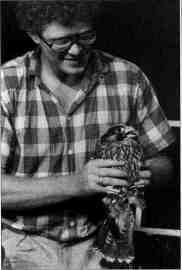
|
Lend a Hand Donations can be directed to the Department of Natural Resources, Wildlife Preservation Fund, 524 S. Second St., Springfield, 111. 62701-1787. The Internet address for contributing is http: //dnr.state.il.us/brol .htm. Additional information about the fund is available by accessing the DNR homepage at http: //dnr.state.il.us. Persons or groups seeking grant applications can contact any DNR office to request a proposal package that provides information regarding types of projects and names of program contact people throughout the state. This material can also be obtained by calling the Division of Natural Heritages Springfield office at 217.785.8774. |
March/April 1999 49
Preserving the most land in Illinois history for public recreation and conservation purposes, the Edgar administration brought to 85, 000 acres the total amount of land acquired or protected during his two terms as governor. Some 44, 000 acres of the total were acquired by the state, while an additional 41, 000 acres were protected by working with federal officials. Included in the total were nearly 614 acres of bottom- land hardwoords, located near Sanganois Conservation Area, which was donated by E. Earl Roland and Mary L. Rolad. The gift increased the size of the conservation area to 9, 319 acres. Located at the junction of the Sangamon and Illinois rivers, Sanganois offers waterfowel, upland and forest game hunting.
In January, Edgar accpeted a donation to the state of 4, 180 acres of land in Saline County from Sahara Coal Co., Harrisburg. Located east of Marion, the property eventually will become a state park called Sahara Woods. The state also has an option to purchase an adjoining 852-acre tract from the company.
The property includes a 100-acre lake and extensive wooded areas, including a quality stand of white oaks. Hunting, fishing, horseback riding and hiking are envisioned for the site, perhaps as early as mid- summer. Campsites and picnic grounds could be added over the next decade as money becomes available for road construction and other improvements.
"The Department's stewardship of this property will ensure proper reclamation and management," said DNR director Brent Manning, adding that no state money will be used on the small portion of the property requiring cleanup.
Among Edgar's last official acts were two other announcements dealing with natural resources and outdoor recreation issues. Saying protection of Illinois' forest resources is a crucial part of efforts to protect all of the state's natural resources, Edgar signed legislation keeping the Illinois Forestry Development Council in place through 2008, allowing for the council to continue advising the Department of Natural Resources on foresty issues as it has for the past 10 years. The council has worked for the last two years on a comprehensive multi-agency long-range plan concerning state forest resources. The council also oversees the Illinois Forestry Development Fund and advises DNRs Division of Forest Resources on matters pertaining to the fund.
Edgar also directed the Illinois Department of Transportation to move forward on making Illinois Route 29 a four-lane highway from Rochester to Taylorville, with a bike path that will run along the roadway. His decision means that the four-lane road improvement and bike path will be designed to preserve about 45 acres of prairie at three locations along abandoned railroad right-of-way on the south edge of Illinois 29.
The new bike path along the route will connect to the existing Lost Bridge Trail, a bike path from Rochester to Springfield. Engineering work for the preliminary design and an environmental assessment are expected to be completed in the next 15 months and will include public hearings on the project.
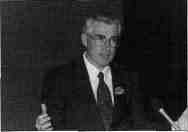
Photo above: Governor Edgar expresses his passion for the outdoors and
pride the accomplishments of his administration related to natural resources
at a "A Tribute to Governor Edgar," held Dec. 18 of the Springfield
Renaissance, attended by more than 250 representatives from Illinois
conservation organizations.
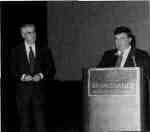
Photo above: Speaking at the tribute, Ted Flickinger,
executive director of the Illinois Association of Park
Districts, thanks Gov. Edgar for the many gifts he has left
the people of Illinois, including a better quality of life.
50 Illinois Parks and Recreation

"The people that I am appointing today represent the top leaders in their respective fields," Ryan said. "I believe we have found some talented people with the technical expertise, management experience and people skills that will help us fulfill the goals of this administration."
Manning, 45, of Pawnee, served as director of the old Department of Conservation under former Gov. Jim Edgar and then was named by Edgar to head the Department of Natural Resources after its creation by Edgar in a governmental reorganization in 1995 that merged the conservation department with other state agencies dealing with natural resources. Before joining state government. Manning was director of field operations for Ducks Unlimited.
|
How To Get Listed in Outdoor Illinois' Calendar Outdoor Illinois will publish calendar listings for outdoor-related events throughout the state as space permits. Calendar items must be submitted in writing at least six weeks prior to the date of the event. (The earlier the better.) Please provide the name of the event, the date and times, location, a brief description of the event and the name and phone number (including area code) of a person who can be listed as a source for more information. Send calendar listings to Calendar, Outdoorlllinois, 524 S. Second Street, Springfield, 111., 62701-1787, fax them to 217.782.9552 or e-mail them to editor@dnrmail.state.il.us. |
March/April 1999 51
Wildlife Benefits from Tax-time Contributions
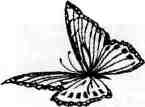
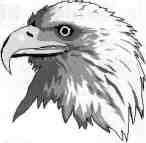
Illinois conservadonists and outdoor enthusiasts are being asked to contribute to the Illinois Wildlife Preservation Fund through their state income tax returns to benefit threatened and endangered birds, animals and plants and to protect sensitive habitat throughout the state.
"A donation to the Wildlife Preservation Fund is an easy way to help assure the natural beauty and wealth of wildlife in Illinois will be protected for the enjoyment of our children, our grandchildren and for generations to come," said Department of Natural Resources Director Brent Manning.
"Wildlife Preservation contributions through the state income tax check-off are an important investment in the future."
The Wildlife Preservation Fund appears on Illinois income tax return forms for the 16th consecutive year for returns to be filed in 1999. Donations in 1998 totaled near $177, 000, while more than $3.1 million has been contributed to the fund during the past 15 years.
"The wildlife fund continues to be the most popular check-off on the state fax form," Manning said. "Donors can see the results in improved populations of everything from bald eagles and prairie chickens to butterflies and river otters."
During the next year, donations to the Wildlife Preservation Fund will assist in supporting more than 40 habitat enhancement and research projects locusing on dozens of endangered and threatened species as well as a variety of sensitive natural communities supporting wildlife.
Donations to the Wildlife Preservation Fund are tax deductible and may be made on line 26a of the IL-1040 form. Those taxpayers filing by telephone may donate to the fund on line 10 of Telefile.
DNR Q&A
QUESTION:
Since federal law protects all migratory
birds, including hawks, what should I
do if I come upon a dead or injured
hawk?
ANSWER:
If you find a dead or injured hawk or
other protected bird, the best bet is to
not pick it up. Make a note of where it is
located and call the Department of
Natural Resources' Law Enforcement
Office at 217.782.6431. You don't
want to be in possession of it and have
to explain how you got it.
Get Cookin'
Outchorlllinois, the magazine of the Illinois Department of Natural Resources, is asking readers to submit their favorite recipes for fish,
game, wild edibles: anything harvested from the wild, as well as recipes for meals you can prepare while enjoying the outdoors. Also
solicited is information and recipes involving outdoor cooking methods: in the coals, a kettle over the fire or in a Dutch oven
surrounded by charcoal.
Please be sure your recipe has a tide and a list of ingredients as well as complete directions. If you would like to receive credit for your recipe, please include your name and city. Also appreciated is a phone number in case there's a need to get in touch with you (phone numbers will not be printed).
Send recipes to Recipes, Outdoorlllinois, 524 S. Second Street, Springfield, 111., 62701-1787, editor@dnrmail.state.il.us.
52 Illinois Parks and Recreation